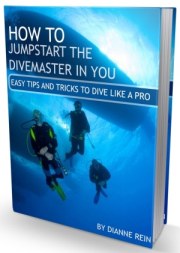MARINE LIFE FACTS
by Anthony Williams
(South Wales, UK)
Over 30,000 different species of marine life populate the 75% of oceans and seas covering our planet, and these are just the ones we’re aware of. Some of these species range from the biggest in the world and shrink down in size to some of the smallest creatures imaginable. What more, certain marine species possess some of the strangest character traits known to man.
For instance, the scalloped hammerhead shark (Sphyma lewini), a fairly recent discovery, shares a near identical appearance to that of the Carolina hammerhead shark (Sphyma gilberti) but, unlike its kindred counterpart, internally, the scalloped hammerhead as ten more vertebrae.
Then there’s the Electric ray, which can grow anything up to 1.5 metres (5ft) long and use its electrical capability to catch its prey. When a fish comes anywhere within the proximity of a ray, striking out, the ray wraps its large fin disc around it and delivers a rapid succession of electrical pulses that stuns the fish.
Additionally, electric rays can also detect other forms of electricity around them. Electroreceptors in jelly filled pores in their heads enable them to carry out this process. Electric rays sense other fish that swim by them owing to the contracting muscles generating electricity everytime the fish flexes them. It is through this process of detection that they are able to fend off would be predators or locate potential food buried under the sand.
Moving on, we have the tiny Turritopsis dohrnii jellyfish that reportedly is immortal. Their remarkable life cycle, which involves reaching sexual maturity before reverting back to a juvenile state, a process it can repeat innumerably means, that in theory, the Turritopsis dohrnii jellyfish can live forever.
Although most T species die ordinarily, in times of dire crisis they can revert to a polyp state—a method referred to as ‘transdifferentiation’. This process affords them the potential to reproduce asexually and start a new colony. And, as a totally unique process in the animal world, it has helped this species populate oceans around the world.
Next is the pistol shrimp that can snap its claws louder than a Concorde’s jet engines. It can snap them so loud that it actually tears the water apart, which then causes a huge gas bubble to form (known as a ‘cavitation’ bubble). On bursting, this bubble emits an ear-popping crack at 218 decibels that lasts for approximately one millisecond. Inside the bubble prior to bursting, temperatures can reach 4,700 degrees C (8, 500 degrees Fahrenheit). This can produce an intense flash of light that the pistol shrimp uses to stun its victims.
The single cell marine organism, Syringammina fragilissima, a deep sea dwelling creature, can stretch out its single celled structure, which resembles an extending tube-like network, over a distance of 10 cm (3.9 in). To help it remain firmly in place as it grows, it oozes out a slimy sediment that then solidifies.
While, the pygmy seahorse—Hippocampus bargibanti—as an unique set-up where males—YES MALES—are the ones that get pregnant and, at a mere 1 1/2 inches in length, this half inch creature can only be found on the Muricella gorgonian coral in Lembeh Strait in Indonesia.
Lastly, a mystery that’s puzzled scientist for numerous years was how coral survived in the deep deserts of the ocean depths (deep deserts are places in oceans where there’s a lack of sustainable nutrients). However, it was discovered that sponges were the saviour of coral, as they act like a sort of recycling machine, soaking up nutrients out of the water and dispersing them back into the food chain.
This process would then enable the coral to feed.
Anthony Williams
Want to stay down longer and improve your buoyancy control and other diving skills? Our free report "Increase Your Bottom Time" along with our practical, weekly actionable tips will have you looking like a seasoned diver in no time. So come join us and see improvement on your very next dive!
(Click on the photo to join us now!)
What's New
-
Happy New Year
Jan 01, 24 06:00 AM
Happy New Year everyone! I hope everyone is well and had a fun New Years Eve! May your new year be filled with lots of wonderful dives. All the best to you and yours in 2024! Let the dives begin. -
Happy Holidays
Dec 14, 23 05:05 AM
I hope everyone is enjoying the holiday season! I am always amazed at how fast time flies and another year is just around the corner. I wanted to pop in and say hi to everyone. I am doing some full ti… -
3 Common Scuba Diving Mistakes New Divers Make
Feb 23, 23 02:18 PM
In this video, I share 3 common scuba diving mistakes beginner divers make. Learn how to correct these for a better - and safer - dive. -
Scuba Diving Tipping Etiquette: How Much And When To Tip Scuba Crew
Feb 06, 23 03:34 PM
Not sure of scuba diving tipping etiquette? In this video I share who to tip, when to tip, how much to tip, tipping on liveaboards, tipping an instructor & more -
Scuba Diving Tips For First Time
Jan 29, 23 05:41 PM
These scuba diving tips for first time divers will help improve buoyancy control, air consumption, equalization and boat diving. Improve on your very next dive!














